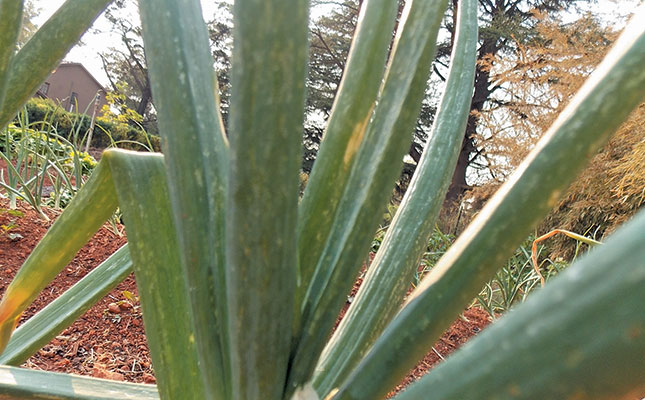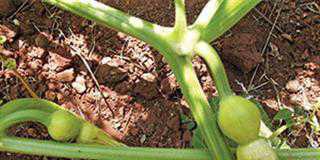
Do not assume there are no cutworms in land left fallow because there has been nothing for them to eat. Although cutworms prefer freshly emerged plants or new transplants, they can survive on dry plant debris for ages. They can also survive through winter on whatever organic material they find.
READ Know your crop pests: Locust
By using a pyrethroid, you can protect a land easily and at low cost. Apply before transplanting, especially when the cutworms are large and their numbers are high. With direct-seed planting, mix the insecticide in with the pre-emergent herbicide.
When you have set aside a land for onions, look at the weeds growing on it; these will show if cutworms are present. After cutting them off at ground level, cutworms draw the young plants into the ground, leaving the leaves protruding. Where the weeds are larger, cutworms
After cutting them off at ground level, cutworms draw the young plants into the ground, leaving the leaves protruding. Where the weeds are larger, cutworms may cut off individual leaves from the stem and pull these underground. If you see these signs, spray even before doing land preparation.
Beware of getting caught out later on when you spray weeds that emerge during crop growth. The night-flying moths will lay their eggs and the cutworms will survive on the dead weeds and other organic material and attack the crop when they come of age.
You could, of course, apply a suitable insecticide with the herbicide, but this would kill beneficial insects that control thrips and leaf miners. Rather conduct frequent inspections to see if the moths have laid eggs on the newly emerged weeds, which will show signs of damage. Then spray with insecticide accordingly.
Thrips
Thrips are the other pest you are certain to encounter. This minute insect, which is dark when mature, damages the leaf surface with a specialised left jaw and drinks the sap.
Look for silvery coloured lesions. When you open up a lesion, you will see large numbers of yellowish juveniles.
Predators of thrips include other thrips species, such as the larger black and white types, as well as ladybirds and pirate bugs. Together, these can reduce the thrip population to a tolerable level.
I grow onions on a small scale and have not had to apply thrips control for many years. On the other hand, you will probably have to apply an insecticide if you are growing the crop on a large scale.
Spraying for thrips
Onions have a waxy skin that repels water. So drench the leaves properly with a good wetting agent to break down the surface tension when you start spraying.
READ A spraying strategy for CBS
Use enough of the spray mixture so that it runs down the leaves into the cleavage where the new leaves are emerging; this is where the juvenile thrips will be hiding. Ask your crop chemical rep for the most effective product for your area.
Bill Kerr is a vegetable specialist and a breeder of a range of vegetables.













